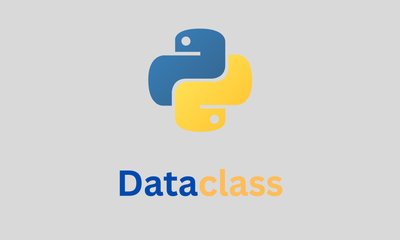Exploring Dataclasses in Python: Simplifying Data Storage and Manipulation
By hientd, at: March 25, 2023, 10:57 a.m.
Estimated Reading Time: __READING_TIME__ minutes


The use of programming languages is widespread in various applications, including data analysis and machine learning. Among the valuable features that programming languages offer, the dataclass stands out. This article will examine what dataclass is, its importance, functionality, and use cases, and provide code snippets to demonstrate its implementation.
1. What is dataclass in Python?
Dataclass is a decorator that was introduced in Python 3.7 to simplify the creation of classes that primarily store data. It provides a concise way of defining classes with default attributes and methods for data manipulation, comparison, and serialization. Dataclass allows developers to create classes with minimal code, thus reducing the possibility of errors and enhancing code readability.
2. Why use dataclass in Python?
There are several benefits of using dataclass in Python.
Firstly, dataclass simplifies the creation of classes that store data. This is especially useful for classes that have many attributes, as dataclass provides a concise way of defining them.
Secondly, dataclass automatically generates default methods for data manipulation, comparison, and serialization. This reduces the need for developers to manually define these methods, which can be time-consuming and error-prone.
Finally, dataclass enhances code readability by making it easier for other developers to understand the purpose of a class.
3. How to use dataclass in Python?
To use dataclass in Python, you need to first import the dataclass decorator from the dataclasses module. You can then decorate a class with the dataclass decorator, specifying the attributes of the class as parameters. Here is an example of how to create a dataclass that represents a person:
from dataclasses import dataclass
@dataclass
class Person:
name: str
age: int
email: str
In the above code, we have defined a class called Person using the dataclass decorator. The class has three attributes - name, age, and email - each with its own data type.
4. When to use dataclass in Python?
Dataclass is best used when creating classes that store data. It is especially useful for classes that have many attributes, as it provides a concise way of defining them. Dataclass is also useful when creating classes that require data manipulation, comparison, or serialization. It is not recommended to use dataclass for classes that require complex behavior or non-data-related functionality.
Examples:
Here are some examples of how dataclass can be used in Python:
Creating a dataclass for a book
from dataclasses import dataclass
@dataclass
class Book:
title: str
author: str
pages: int
def is_long(self):
return self.pages >= 500
Creating a dataclass for a car
from dataclasses import dataclass
@dataclass
class Car:
make: str
model: str
year: int
color: str
def age(self):
current_year = datetime.now().year
return current_year - self.year
Creating a dataclass for a point
from dataclasses import dataclass
@dataclass
class Point:
x: float
y: float
def distance(self, other):
dx = self.x - other.x
dy = self.y - other.y
return (dx ** 2 + dy ** 2) ** 0.5
5. Dataclass Use Cases
5.1 Configuration objects
Configuration files often require creating an object with multiple properties that need to be set and read. A dataclass can be used to create a configuration object with minimal code. The dataclass can be used to store default values and provide a consistent interface to read and modify the configuration.
For example:
from dataclasses import dataclass
@dataclass
class Configuration:
data_dir: str = "./data"
num_epochs: int = 10
learning_rate: float = 0.001
5.2 Data transfer objects
Data transfer objects (DTOs) are often used in web applications to represent data that is passed between client and server. Dataclasses can be used to define these objects in a simple and readable way. The dataclass can contain multiple properties, which can be set and retrieved with ease.
For example:
from dataclasses import dataclass
@dataclass
class UserDTO:
id: int
name: str
email: str
5.3 Data containers
Dataclasses can also be used as containers to hold related data. For example, in a machine learning application, a dataclass can be used to store information about a dataset, such as the input data, the labels, and any metadata. The dataclass can provide default values and methods to manipulate the data.
For example:
from dataclasses import dataclass
import numpy as np
@dataclass
class Dataset:
inputs: np.ndarray
labels: np.ndarray
metadata: dict = None
def shuffle(self):
idx = np.random.permutation(len(self.inputs))
self.inputs = self.inputs[idx]
self.labels = self.labels[idx]
6. Pros and Cons
6.1 Pros of dataclasses
- Simplify the creation of classes that primarily store data
- Provide a concise and readable way to define classes
- Automatically generate default methods for data manipulation, comparison, and serialization
- Enhance code readability by making it easier for other developers to understand the purpose of a class
6.2 Cons of dataclasses
- Can be less flexible than a normal class, as they are primarily designed for storing data
- May not be suitable for classes that require complex behavior or non-data-related functionality
- May not be compatible with older versions of Python, as dataclasses were introduced in Python 3.7
7. Conclusion
In conclusion, dataclass is a powerful feature in Python that simplifies the creation of classes that store data. It provides a concise way of defining classes with default attributes and methods for data manipulation, comparison, and serialization. Dataclass is best used for classes that primarily store data and require minimal code. With dataclass, developers can create classes with ease and enhance code readability.
References:





